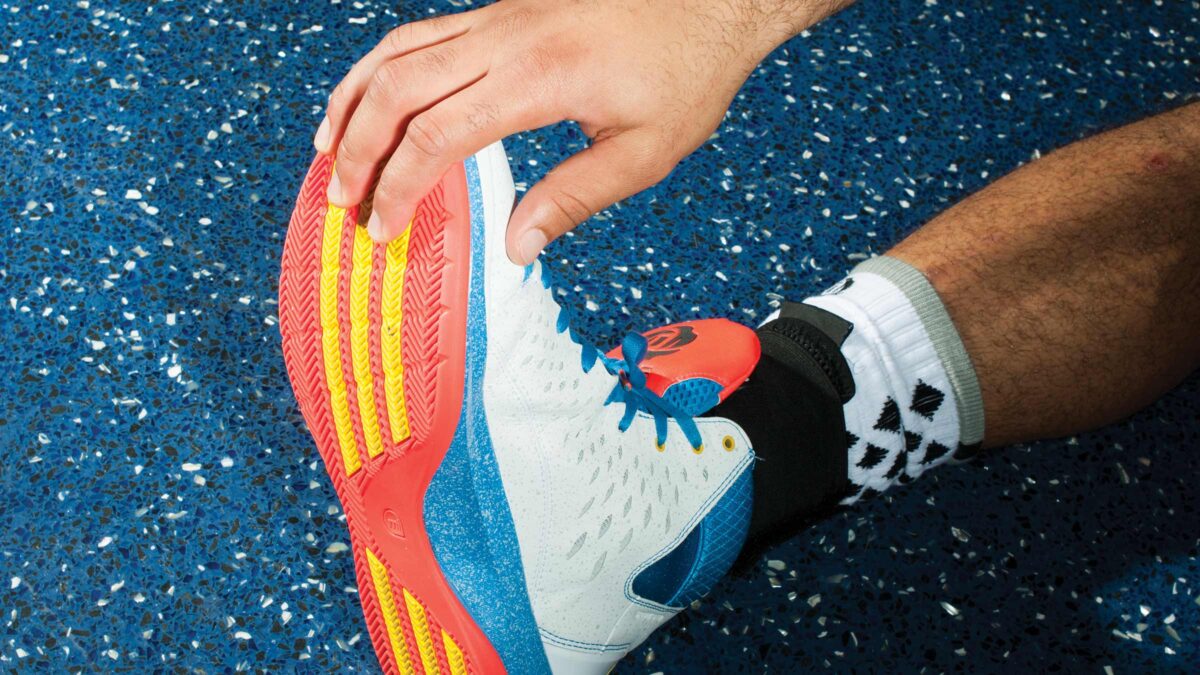How Marketers Choose College Athlete Influencers

自2021年以来,麦当劳、微软、百事公司、伯克希尔·哈撒韦、亚马逊、联合利华和其他领先的公司都做了一件前所未有的事情:它们向美国大学生运动员支付酬劳,让他们担任产品代言人并利用网红身份推广产品。在美国最高法院当年做出裁决之前,根据全美大学生体育协会(NCAA)的规定,向大学生运动员支付报酬的行为是被禁止的。法院裁决后,NCAA采纳了一项政策,使52万多名学生运动员能够通过签署所谓的“NIL协议”,将自己的姓名(Name)形象(Image)和肖像权(Likeness)货币化。虽然目前还没确切的统计数据显示有多少运动员签署了此类协议,但截至2022年,美国得克萨斯理工大学已有278名学生(占校队运动员的40%)获得了赞助。短短几年间,营销人员在此类代言上的花费已经超过10亿美元。对于运动员个人而言,这些交易利润丰厚。以美国康涅狄格大学篮球运动员佩奇·布克尔斯(Paige Bueckers)为例,她被佳得乐选为首位赞助的大学生运动员,预计布克尔斯在大学打篮球期间的收入将超过100万美元。
Since 2021 McDonald’s, Microsoft, PepsiCo, Berkshire Hathaway, Amazon, Unilever, and other leading companies have done something that was never before possible: They have paid U.S. college athletes to act as product endorsers and influencers. Until a Supreme Court ruling that year, paying college athletes was forbidden under the rules of the National Collegiate Athletic Association (NCAA). In the aftermath of the Court’s ruling, the NCAA adopted a policy that enabled more than 520,000 student athletes to monetize their names, images, and likenesses by signing what have become known as NIL deals. Although no definitive count exists of athletes who have signed such deals, 278 students (40% of varsity athletes) at Texas Tech had been sponsored as of 2022. In just a few years marketers have already spent more than $1 billion on such endorsements. For individual athletes these deals can be lucrative. Consider Paige Bueckers, a University of Connecticut basketball player, whom Gatorade chose as its first sponsored college athlete. Bueckers is expected to earn more than $1 million while playing college basketball.
出于种种原因,大学生运动员代言人和网红的身份特别具有吸引力。品牌寄希望于他们的年龄能让他们在吸引和连接年轻受众方面更为有效。他们的赞助费用低于职业运动员,他们可以让品牌深入球迷(尤其是校友)与大学运动队之间忠诚而热情的关系中去。通过与他们签约,品牌可以建立一种可能延续到奥运会和职业运动生涯的关系。
College athletes are especially attractive as endorsers and influencers for several reasons. Brands hope that their age will make them effective at engaging and connecting with a younger audience. Their sponsorship deals cost less than those of professional athletes. They allow brands to tap into the loyal and passionate relationships that fans (especially alumni) have with university sports teams. And by signing them, brands can build a relationship that may extend into Olympic and professional sports careers.
不过,这些关系也伴随着风险。不端行为和丑闻会对名人代言人造成威胁,而大学生可能更容易做出引起负面报道的行为。因此,营销人员要努力识别那些品行端正、风险较低的人并与之合作。这种尽职调查可以采取多种形式,但其中一个重要步骤是仔细检查运动员在社交媒体上发布的内容——因为社交媒体通常是运动员推广品牌的主要渠道。
These relationships come with risks, however. Misbehavior and scandal can threaten celebrity endorsers, and college students may be even more likely to behave in ways that cause negative publicity. Therefore marketers work to identify and partner with those whose character suggests they represent a low risk. Such due diligence can take a variety of forms, but one important element is scrutinizing the content of the athletes’ social media posts—especially because social media is often a primary channel through which athletes will promote their brands.
为了了解企业对大学生运动员的要求,我们观察了那些被顶级公司赞助的运动员在其社交媒体中的表现。根据2022年Axios Harris民意调查,我们确定了64名被声誉最好的100家公司聘为推广大使的大学生运动员。然后,我们分析了这些运动员在Instagram上发布的帖子,并确定了20个特征,包括粉丝数量、帖子数量和发布频率,帖子是否与运动员的运动有关,帖子是否与运动员或其他人有关,帖子是否被性感化,图片是摆拍还是自然,等等。在可能的情况下,我们使用客观的衡量标准或既定的方法来评估图片。
To understand what companies look for in college athletes, we relied on observed behavior—the patterns that athletes who have been chosen for sponsorship by top companies exhibit in their social media posts. We identified 64 college athletes hired as influencers by the 100 companies with the best reputations according to the 2022 Axios Harris Poll. We then analyzed the Instagram posts of those athletes and identified 20 characteristics, including the number of followers, the number and pace of posts, whether posts were about the athlete’s sport, whether posts were about the athlete or others, whether posts were sexualized, whether images were posed or candid, and so forth. Wherever possible, we used objective measures or established methods of assessing images.
我们的分析揭示了五个洞见,这些洞见可能有助于营销人员形成赞助大学生运动员的最佳做法,也有助于大学生运动员产出能最大限度提高他们赞助几率的社交媒体内容。
Our analysis revealed five insights that may be useful as marketers consider their own best practices for sponsoring college athletes—and as college athletes produce social media content that may maximize their odds of receiving sponsorship offers.
粉丝数量并非必要条件
High follower counts aren’t essential
有些令人意外的是,与其他类型的网红相比,顶级品牌赞助的运动员很少拥有大量粉丝。只有29%的运动员拥有超过10万名粉丝。实际上,59%的运动员的粉丝少于5万名,14%的运动员拥有2000至5000名粉丝,3%的运动员的粉丝甚至不到2000名。许多未被顶级品牌选中的运动员比那些被选中的运动员拥有更多的粉丝。显然,品牌选择运动员看重的是他们形象的力量:他们是谁,以及他们代表什么。
Perhaps surprisingly, few athletes sponsored by the top brands had a high number of followers compared with other types of influencers. Only 29% had more than 100,000 followers. In fact, 59% had fewer than 50,000 followers, 14% had from 2,000 to 5,000, and 3% had fewer than 2,000. Many athletes not chosen by the top brands have more followers than those who were chosen. Apparently, brands select athletes for the strength of their image: who they are and what they represent.
乔纳森·科滕(Jonathan Cotten)是全国性足弓支撑零售商Good Feet Store的主要加盟商。当他决定将赞助大学生运动员作为公司营销计划的一部分时,几乎没有关注粉丝数量。相反,他寻找的是具有“不屈不挠”品格的人,相信这样的人符合公司的价值观。为了衡量一个人的品格,科滕和管理团队查看了运动员在社交媒体上发布的帖子,与运动员进行了交谈,甚至还与几位运动员的父母进行了交谈。在考虑是否在网红大学生运动员身上花钱时,科滕认为,最大的潜在成本不是支付给运动员的费用,而是如果运动员的行为(无论是在体育运动中还是其他场合)对品牌造成不良影响,品牌就会面临声誉风险。他最终签下了美国弗吉尼亚大学的几名运动员,几乎不考虑他们的粉丝数量:女子篮球运动员扬塔·沃恩(Yonta Vaughn)的粉丝不到2000人;赛艇运动员斯凯拉·达尔(Skylar Dahl)的粉丝不到1300人;男子篮球运动员艾萨克·麦克尼利(Isaac McKneely)的粉丝不到1.6万人。
Jonathan Cotten is a leading franchisee of the Good Feet Store, a national retailer of arch supports. When he decided to sponsor college athletes as part of his company’s marketing plan, he paid little attention to follower counts. Instead he sought “strong character” in someone he trusted would fit with the values of the company. To gauge character, Cotten and his executive team looked at players’ social media posts, had conversations with players, and even talked to the parents of several athletes. While considering whether to spend money on college athlete influencers, Cotten decided that the biggest potential cost was not the payment to the athlete but the reputational risk if the athlete behaved in ways (whether during the sport or not) that reflected poorly on his brand. He eventually signed several University of Virginia athletes with little regard for the size of their followings: Yonta Vaughn, a women’s basketball player, had fewer than 2,000 followers; Skylar Dahl, a rower, fewer than 1,300; and Isaac McKneely, a men’s basketball player, fewer than 16,000.
当我们问科腾为什么愿意选择粉丝相对较少的网红时,他说,当他们确定了合适的运动员时,愿意首先在公司自己的社交媒体平台上推广这一关系,而不是依赖于运动员的平台。他们赌的是,随着时间的推移,网红运动员的粉丝会越来越多。我们的研究表明,科滕的想法并非孤例。如果粉丝数量是大品牌优先考虑的因素,那么运动员被赞助的情况将会有所不同。
When we asked Cotten why he was willing to choose influencers with relatively small followings, he said that when he and his team identify the right kind of athlete, they are willing to begin by promoting the relationship on the company’s own social media platforms, rather than relying on the athlete’s platform. They are betting that the influencer’s following will grow over time. Our research indicates that Cotten is not alone in his thinking. If follower count was a priority for big brands, the profile of athletes chosen for sponsoring would be different.
不仅限于橄榄球和篮球
It’s not just football and basketball
在美国,历来只有橄榄球和男子篮球能带来可观的收入、媒体曝光和比赛上座率。早期对姓名、肖像和形象权(NIL)交易的追踪主要集中在这两项运动上,因为人们认为营销人员在选择赞助对象时会将注意力集中在这方面,但是,前100强公司选择的赞助对象包括来自高尔夫、体操、曲棍球、长曲棍球、足球等其他运动项目的运动员。实际上,约50%的受赞助运动员来自橄榄球或男子篮球以外的体育项目。显然,运动员的品牌价值不仅仅与某项运动的相关收入挂钩。美国佐治亚大学田径运动员马修·博林(Matthew Boling)与唐恩都乐(Dunkin’ Donuts)建立了合作伙伴关系。博林在社交媒体上发布了他参加比赛、与队友一起训练以及下单都乐咖啡的照片。博林强调赛场内外的卓越表现——这对公司来说是一个很有吸引力的定位。
Historically only football and men’s basketball have generated substantial revenue, media exposure, and game attendance in the United States. An early effort to track NIL deals focused on those two sports, because it was assumed that marketers would concentrate on them when choosing sponsors. But the people chosen by the top 100 companies include athletes from golf, gymnastics, hockey, lacrosse, soccer, and other sports. In fact, about 50% of sponsored athletes came from sports other than football or men’s basketball. Clearly, the value of an athlete’s brand extends beyond the revenue associated with a sport. Consider Matthew Boling, a track-and-field athlete at the University of Georgia who partners with Dunkin’ Donuts. Boling’s social media posts include images of him in competition, training with teammates, and ordering Dunkin’ coffee. Boling emphasizes excellence on and off the track—an attractive position for the company.
不要摆拍
It’s not about striking a pose
如果你花时间浏览大学生运动员的帖子,就会发现他们中的很多人分享的照片都以摆拍为主。在他们的推送中,经常充斥着看起来像专业模特的照片:镜头直接对准运动员,照片中只有他一个人。与此相反,在我们的研究中,一半以上的运动员发布的图片是自然的、没有摆拍的。
If you’ve spent time looking at college athletes’ posts, you’ll have seen that many of them share predominantly posed images. Often their feeds are filled with what look like professional modeling photos: The camera is aimed straight at the athlete, who is alone in the picture. In contrast, more than half the images posted by the athletes in our study are natural and unposed.
布莱克·科勒姆(Blake Corum)是2023年美国全国冠军密歇根大学橄榄球队的一名跑卫,曾与赛百味(以及其他一些不在前100名之列的品牌)合作。他的社交媒体上充斥着他健身、打球、在团队中交谈、从球迷身边走过的照片。在我们的研究中,展示科勒姆的Instagram照片,超过80%是自然抓拍而非摆拍。这些照片使他看起来更自然、更真实(少了些以自我为中心),而先前的研究表明,在网络环境下,受众对真实照片的反应比对摆拍照片的反应更积极。
Consider Blake Corum, a running back on the 2023 national champion University of Michigan football team, who has worked with Subway (and a number of other brands not among the top 100). His social media is full of photos of him working out, playing football, talking in the middle of a team huddle, walking past Michigan fans, and so forth. More than 80% of the Instagram photos featuring Corum in our study were candid rather than posed. They make him appear more natural and authentic (and less self-centered) than others, and prior research indicates that audiences react more positively to candid photos than to posed ones in online contexts.
帖子的组合偏向于体育内容
The mix of posts leans toward sports
运动并不是大学生运动员生活的全部。而且,如今由于大多数大学生运动员从十几岁起就活跃在Instagram和其他社交网站上,他们习惯了发布各种内容,如聚会、音乐会、重要时刻或与朋友活动的照片。然而,在我们的研究中,运动员们的Instagram账号已经开始从个人内容转向以体育为导向的内容。这是有道理的。因为他们参与了体育运动,品牌才会选择向他们付费。在签订了NIL协议的大学生运动员中,有48%的人在Instagram图片中以体育内容为特色。在转为职业运动员的大学生运动员中,体育内容的比例也有所上升。在顶级品牌赞助的职业运动员发布的信息中,63%集中于体育。目前还不清楚是品牌在鼓励这种做法,还是运动员只是在模仿他们的同龄人。但这种差异是显著的——当我们与学生运动员讨论如何塑造自己的品牌以吸引企业赞助商时,我们建议他们效仿职业运动员,保持较高的体育与非体育内容发布比例。
Athletics are not everything in the life of a college athlete. And because most college athletes today have been active on Instagram and other social media platforms since their early teenage years, they’ve grown up posting both sports and nonsports content, such as photos from parties, concerts, milestones, or activities with friends. However, the athletes in our study have started to shift away from personal content and toward sports-oriented content in their Instagram accounts. That makes sense. The brands are choosing to pay them because of their involvement in sports. Among the Instagram images of college athletes with NIL deals, 48% featured sports content. The proportion of sports content goes up among college athletes who transition to the pros as well. Sixty-three percent of the postings of professional athletes sponsored by the top brands were sports-focused. It’s not clear whether brands are encouraging this or the athletes are simply mimicking their peers. But the difference is striking—and when we speak with student athletes about shaping their own brands to appeal to corporate sponsors, we suggest that they emulate the pros and keep the ratio of sports to nonsports content high.
被选中的运动员要避免性暗示图片
The chosen athletes avoid suggestive imagery
大学生经常会发布自己的性感照片。当我们询问那些发布性暗示内容的大学生运动员的所思所想时,他们说,这类帖子通常会增加粉丝;在他们看来,获得大量粉丝是他们在社交媒体上努力的首要目标。然而,我们的研究发现,在被顶级品牌选中的运动员中,85%的人从未发布过性暗示图片或内容。在15%发布过此类内容的运动员中,平均21张照片中只有两张带有性暗示。这是合理的。虽然品牌希望网红大学生运动员能够触及年轻受众,但顶级品牌也把父母、祖父母和其他可能会被此类内容推开的人作为目标受众。
College students often post sexualized images of themselves. When we asked college athletes who post suggestive content why they do so, they said that such posts typically increase their followings; and in their view, gaining a lot of followers is the primary goal of their social media efforts. However, our research found that 85% of the athletes chosen as influencers by top brands never posted sexualized imagery or content. Among the 15% who did post such content, just two out of 21 photos, on average, were suggestive. That makes sense. Although brands hope that college athlete influencers will reach young audiences, the top brands are also targeting parents, grandparents, and others who may be put off by such content.
对于那些将营销预算分配给大学生运动员的品牌来说,一个显而易见的问题是:很难说清楚这些支出的回报如何。体育营销的投资回报率尤其难以衡量(作者之一的金伯利,曾经负责洗衣品牌汰渍与纳斯卡赛车的合作。她曾尝试用各种方法量化回报,比如给与零售商更强的业务关系赋值,但收效甚微)。这一问题因为3年前NIL协议还不存在而变得更加复杂,但是与大学生运动员签约的成本远远低于与职业运动员签约的成本,因此看起来很有可能获得良好的投资回报率——尤其是考虑到在运动员达到职业生涯巅峰之前,与潜在的迈克尔·乔丹建立长期合作关系的可能性。未来的研究将阐明如何通过这种新的营销渠道最大限度地提高品牌的成功几率。
For brands that are allocating marketing budgets to college athletes, the obvious question is, How well are those expenditures paying off? It’s hard to say. Sports marketing’s return on investment can be especially difficult to measure. (One of us, Kimberly, once oversaw the laundry brand Tide’s partnership with NASCAR. She tried to quantify the return with a variety of methods, such as assigning value to stronger business relationships with retailers, with limited success.) That’s compounded by the fact that NIL deals didn’t even exist three years ago. But signing college athletes costs so much less than signing professional athletes that a good ROI seems likely—especially given the possibility of forging a long-lasting relationship with a potential Michael Jordan before the athlete reaches the pinnacle of his or her career. Future research will illuminate how to maximize a brand’s odds of success with this new marketing channel.
金伯利·惠特勒是美国弗吉尼亚大学达顿商学院老弗兰克M·桑德工商管理副教授,也是《运动员品牌:如何从你的NIL中受益》(Athlete Brands: How to Benefit from Your Name, Image & Likeness)一书的合著者。格雷厄姆·特文特曾任美国达顿商学院高级研究经理,目前是华盛顿特区安永会计师事务所数据与分析技术团队的一员。
金伯利·惠特勒(Kimberly A. Whitler) 格雷厄姆·特文特(Graham Twente)| 文
DeepL、ChatGPT | 译 廖琦菁 | 校 李全伟 | 编辑




